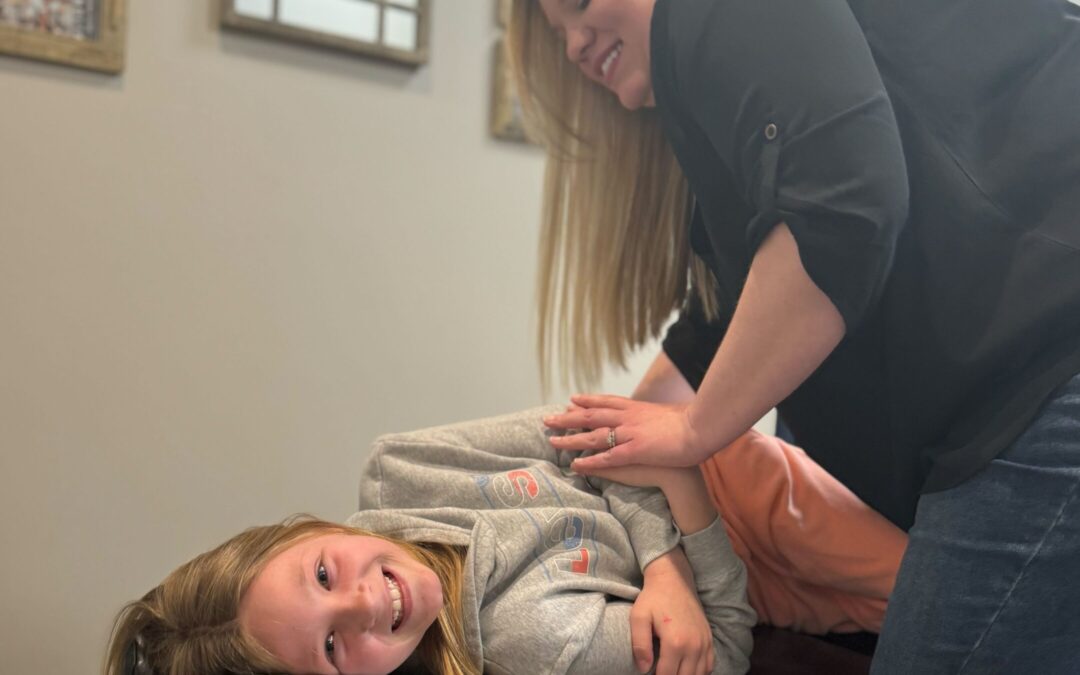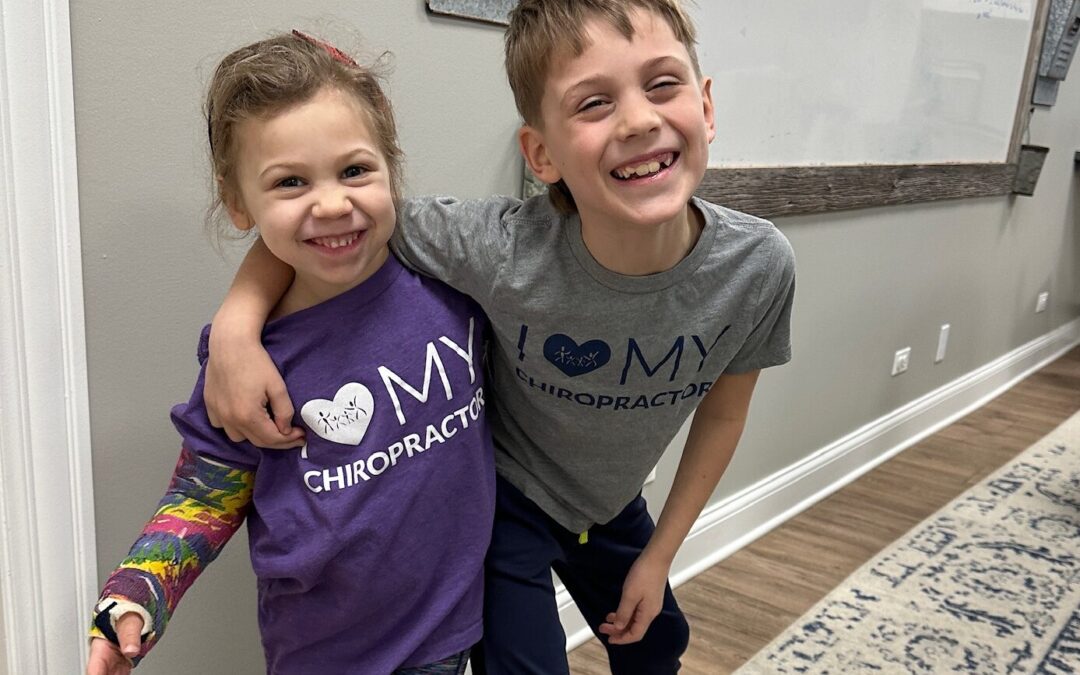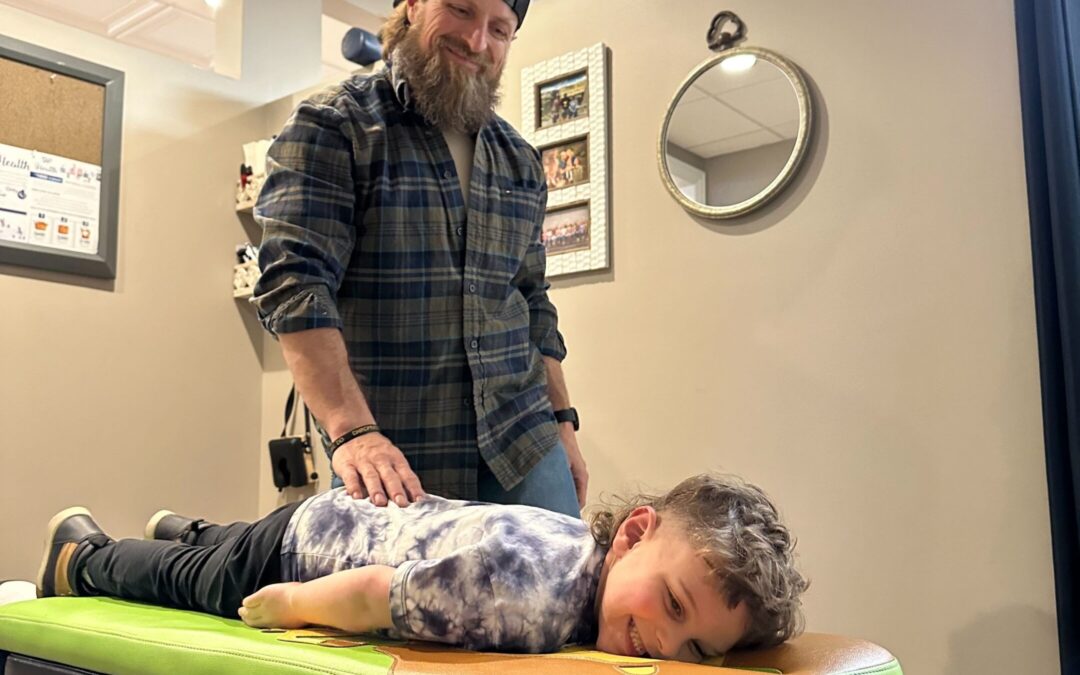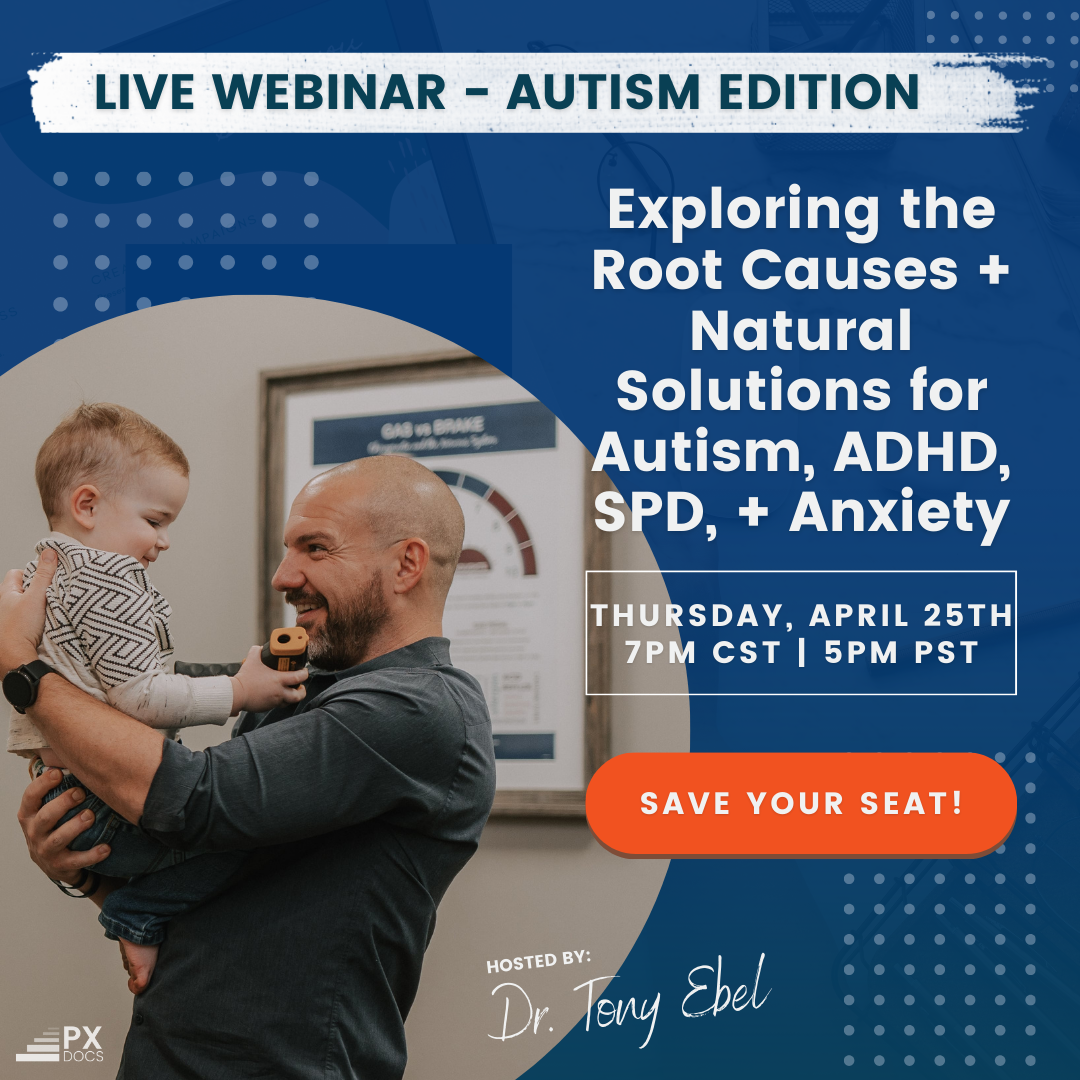For most parents, their kids’ Christmas concert at church is a time of big smiles, tons of joy, and of course, leaning around all the other parents trying to get pictures and videos on their iPhones. But for my wife and I a few years back, our hearts sank, and we were so worried about our baby girl Addison.
Addison was in 3rd grade when the school administrators made the awful decision to have the gym floors refinished with nasty, neuro-toxic chemicals while the kids were still in school. They had done so earlier that fall, and after exposure to those chemicals, Addison immediately began having significant motor tics, sleep challenges, and anxiety.
So during this particular concert, her anxiety was high and aggravating her motor tics, causing her to constantly open her mouth and stretch her jaw, roll her eyes up and around, and turn and stretch her entire neck to the side.
The exposure to those neurotoxic chemicals eventually would be enough to leave her with torticollis in addition to the motor tics, sleep issues, and anxiety.
So parents, if your heart breaks each time you see or hear your child struggle with their motor tics, please know we fully understand, and everything you learn in this article will help you do for your child what we were able to do for Addison – get her healed and to the other side of her challenges without drugs!
What are Motor Tics?
Motor tics are involuntary movements caused by built-up neurological tension, causing spasm-like contractions and movements of muscles, most commonly involving the face, mouth, eyes, head, neck, or shoulders. Vocal tics are sounds uttered unintentionally.
A combination of motor and vocal tics are usually diagnosed as Tourette’s Syndrome, and oftentimes the tics can be caused by other neurological conditions as well.
Most tics are sudden and repetitive, and while they may appear intentional, they are not. A child may be able to suppress a tic for a short time, but the tic movement or sound will recur as the urge becomes stronger.
What are the Symptoms of Motor Tics?
There are many types of tics, with two main types – motor and vocal. Additionally, for most kids, the motor tics will be transient during certain growth spurts or stressful times in life, and yet for other kids, they can become chronic and long-lasting.
From there, it’s important for parents to know that tics can become either simple or complex, with the symptoms being categorized in the following ways:
- Here are symptoms of simple motor tics:
- Quick eye blinks or eye jerks
- Tongue movements, including sticking out the tongue
- Head twitches or head jerks
- Squatting and hopping
- Shoulder shrugs
- Here are symptoms of complex motor tics:
- Facial grimacing
- Touching people or things
- Obscene gesturing or gyrating movements
- Here are some symptoms of vocal tics:
- Grunting
- Barking
- Hissing
- Sniffing
- Snorting
- Throat clearing
- Swearing
- Repeating words
- Stammering
What Causes Motor Tics?
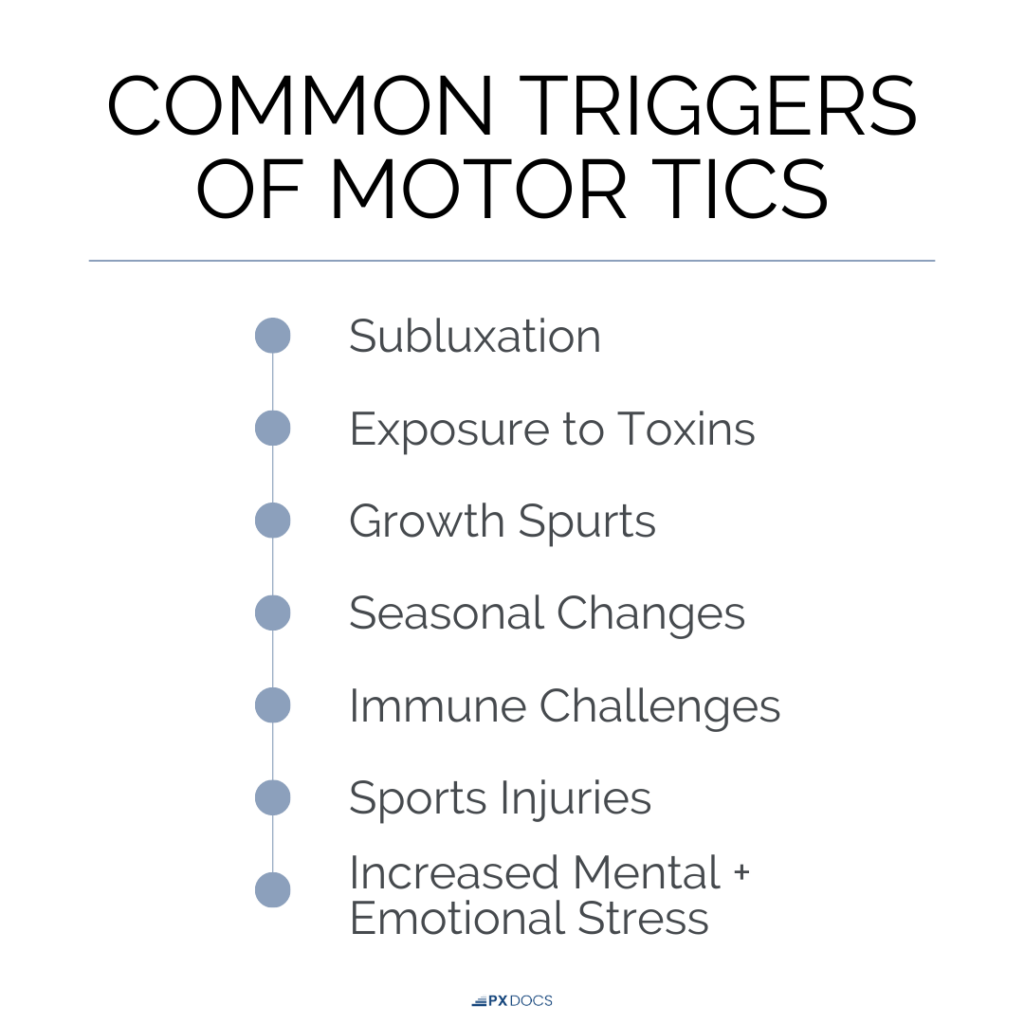
Medically, the most commonly discussed and accepted causes of motor tics include comorbidity with other neurological disorders and then exposure to neurotoxins and drugs.
But looking at things in a bit more basic and simple construct, for many kids, their motor tics can be triggered by very regular things such as growth spurts, seasonal changes, immune challenges, sports injuries, or periods of increased mental and emotional stress.
Because there is such a huge rise in children suffering from chronic neurological challenges such as ADHD, Autism, Anxiety, and Sensory Processing Disorder in today’s world, we can certainly expect to see more kids than ever with motor and vocal tics in conjunction with those conditions.
Then from there, like every article here on our PX Docs website, we want to take parents even deeper into understanding what may be at play, creating that level of stress and tension on their child’s nervous system. That then means looking not just into the correlations with conditions such as ADHD and Anxiety, but what’s causing those conditions in the first place as well.
The truth is, making sense of this is something that can be both simple and complex at the same time. Simple because we know that the #1 cause of all neurological conditions is obviously an overstressed, imbalanced nervous system. But complex because typically, there is not just one singular stressor or life event that causes a child’s nervous system to become so stressed and dysfunctional.
15 years ago, I began to use the term ‘The Perfect Storm’ to really help parents understand what caused their children’s neurological challenges, and now today, thanks to more and more scientific research coming out all the time to make the picture more clear, we know that two other issues are at play with these kids nearly every single time – subluxation and dysautonomia.
Subluxation is a chiropractic term that simply means a child has an overly stressed and excessively stimulated sympathetic “fight or flight” side of their nervous system. This is then the same thing as saying the calming, relaxing parasympathetic “rest and digest” side of their nervous system is underactive and not working at full capacity. When you put all of that together over time, it leads to a condition or neurological state called dysautonomia.
Without a doubt, every single patient I’ve seen in our clinic for the past 15 years who was struggling with motor tics had significant levels of subluxation, neurological dysfunction, and dysautonomia.
And going one step further even, the most common case history finding we kept seeing in these cases was not just the typical stuff discussed like genetics or chemical exposures, but instead, nearly 100% of these cases of children struggling with motor tics had experienced a significant level of birth trauma through such things as emergency c-sections, forceps or vacuum extraction births, or inductions.
It’s long been documented that in addition to toxic exposures, head and neck injuries can cause a sudden onset of motor tics, vocal tics, and Tourette’s… but for some reason, the medical community at large continues to overlook what is right in front of them again and again, birth trauma. Twisting, pulling, and yanking on a child’s head and neck during the birth process certainly qualifies as trauma, in my humble opinion.
Are birth interventions very commonly life-saving? Yes, absolutely. But they are also life-altering in a major way for that child’s nervous system, and that is the message and information that the PX Docs Network and I are determined to get out to the world!
How to Care For Kids With Motor Tics
Medically, the treatment options for tics progress in this manner:
- Transient tics are given a “watch and wait” approach, hoping they go away in time. Additionally, parents and teachers are encouraged not to draw attention to them, as that can increase stress and anxiety for the child, thus aggravating the tics.
- Since stress is clearly at play in so many cases, medical doctors may recommend a combination of counseling, cognitive behavioral therapy, and medications.
- Medication, of course, is known to not cure tics or the condition they are looking to treat, but the goal of medical doctors prescribing antidepressants or other medications for motor tics is to lessen and reduce the symptoms.
Most parents we speak with are not simply looking to mask the symptoms and motor tics challenges their child is experiencing, but instead, get to the root cause and help their child heal naturally without the use of medication. Most parents understand that since most medications, especially those used for neurological conditions, have such a heavy array of side effects, they’ll likely be trading one challenge for another… even if they work at all.
Therefore our clinical approach as PX Docs centers around a simple 3-step process in caring for motor tics:
- Find out if the child is struggling with subluxation and dysautonomia
- If yes, we then put together a customized and personalized care plan for that child to address the subluxation and dysautonomia
- And from there, help build a long-term plan with the parents to help the child best cope with and overcome stress and anxiety so the tics are not triggered again
For so many parents, it’s actually such a relief and exciting time to see the findings of the INSiGHT Neurological Scans that we use to do job #1 of that list because, for the first time, they can see clearly the tension and stress triggering their child’s motor tics and other challenges.
Out of the 3 different scans we run as part of our PX Docs Examination Process, the most important by far for evaluating motor tics is the EMG scan – which measures, locates, and graphs the exact amount location and amount of tension on the neuromuscular system, most specifically the neck and shoulders region.
Next Steps You Can Take
Parents, you definitely deserve to have all the options on the table for you to help your child overcome their motor tics and do so without medications if that’s the route you want to take!
For Addison, that was most definitely the case. While we knew her trigger was the chemical exposure from the school’s awful decision to refinish the gym floors, it didn’t change the care approach we took with her.
She received multiple neurologically-focused adjustments per week to relieve the tension and subluxations that built up and were present in her neck and shoulders region, and over a period of about 12-18 months, we finally got her to the other side of her motor tics, sleep disturbances, and anxiety. And today, she’s fully healthy and thriving, and when she gets stressed or hits a growth spurt, we simply know we need to up the “dose” of her chiropractic adjustments and make sure none of those challenges can make a comeback!
To find your local PX Doc and get your child’s consult and INSiGHT Scans scheduled, simply click over to our directory and plug in your city or zip code to get started right away!


